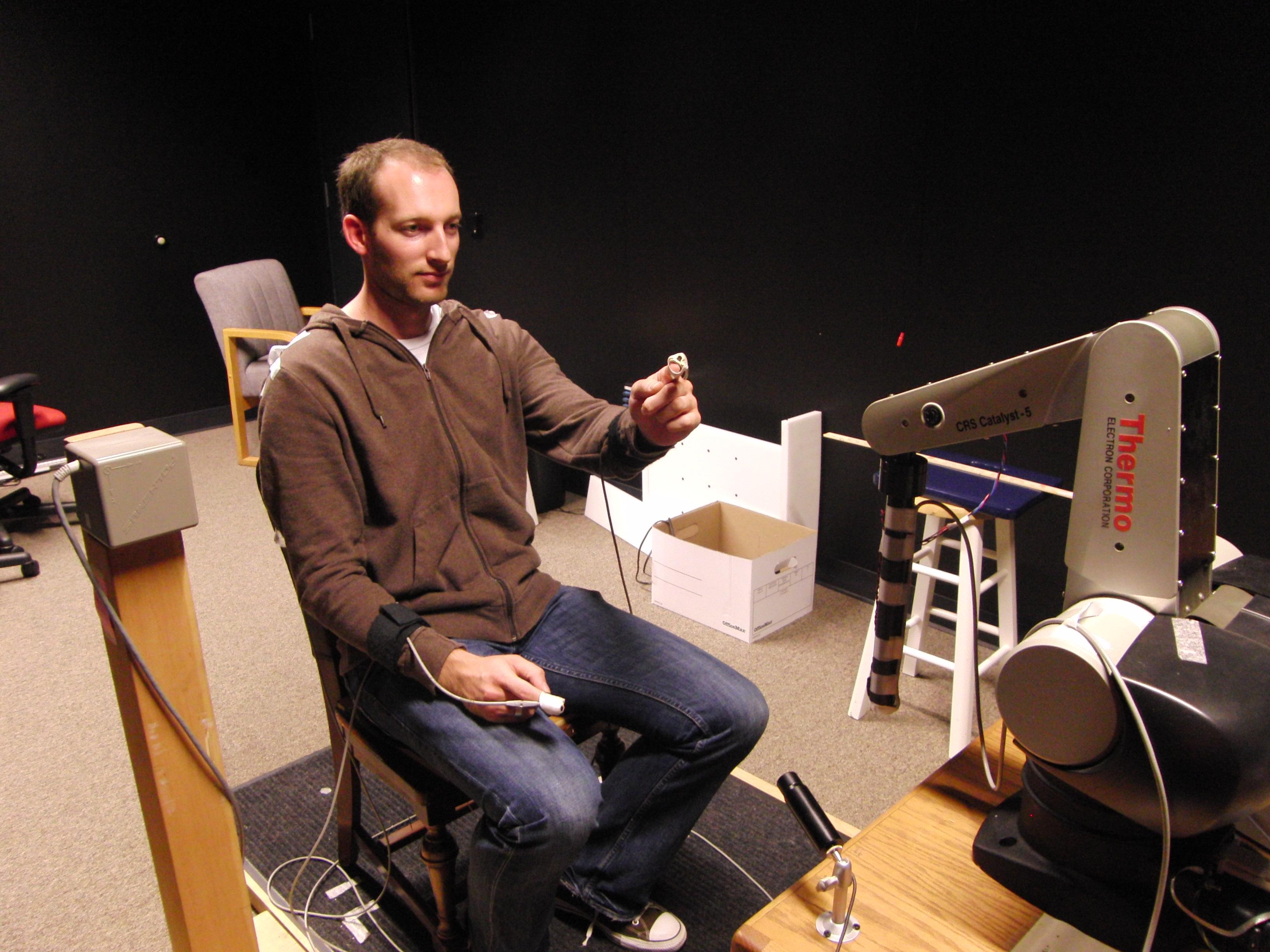Case Study: Motion Tracking Enables Measurement of the Effectiveness of Brain Stimulation Therapy
Polhemus motion tracking technology is used to enable motion measurement in a neuroscience application. Research in this area of neuroscience has been particularly challenging in the past. A method for capturing body movement three-dimensionally and correlating it with a patient’s brain wave activity is a significant advancement in understanding therapeutic effectiveness.

At the Institute for Neural Computation in La Jolla, California, the approach is to analyze the normal motor control and learning processes, and the nature of the breakdown in those processes in patients with selective failure of specific sensory of motorsystems of the brain. (from Poizner Lab website).
Working with the patients after the surgery enables Dr. Poizner to evaluate the effectiveness of Brain Stimulation Therapy. By using Polhemus precision motion tracking technology, Dr. Poizner is able to measure and evaluate how well the therapy is working. By connecting the light-weight and unencumbering Polhemus sensors to the patient’s hand, for example, he is able to capture quantitative data and analyze the degree of trembling the patient experiences, down to the slightest of movements. Dr. Poizner then reports this quantitative data to the clinical side, providing critical insight into how well the therapy is working.
Polhemus’ proprietary electromagnetic technology is ideal for this type of work because of its high level of accuracy and ability to produce repeatable results.
When selecting the precision motion tracker for this research project, Dr. Poizner said, “It was important that we accurately tracked in space without any line of sight occlusions. This is very high tech—as it measures the most subtle movement.”
Dr. Poizner has used various Polhemus motion tracking products, including:
- FASTRAK®—used to digitize positions of EEG electrodes
- LIBERTY™—both 8- and 16- sensor systems used for measuring patient reach and grasp, and other biomechanical metrics
Research in this area of neuroscience has been particularly challenging in the past. A method for capturing body movement three-dimensionally and correlating it with a patient’s brain wave activity will be a significant advancement in understanding therapeutic effectiveness.
According to Dr. Poizner, “The ultimate goal was to be able to quickly and cheaply provide an assessment in a quantitative, correlated, rigorous fashion.”
This study of Measuring the Effectiveness of Brain Stimulation Therapy was presented at the 2010 Neuroscience Show in San Diego, California.
Contact sales@polhemus.com for product information.

